Russian National Anthem: English Version, Original Lyrics, History and Facts
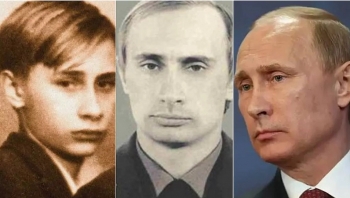 President Putin: Horoscope, Zodiac Sign Personality and Astrological Predictions President Putin: Horoscope, Zodiac Sign Personality and Astrological Predictions |
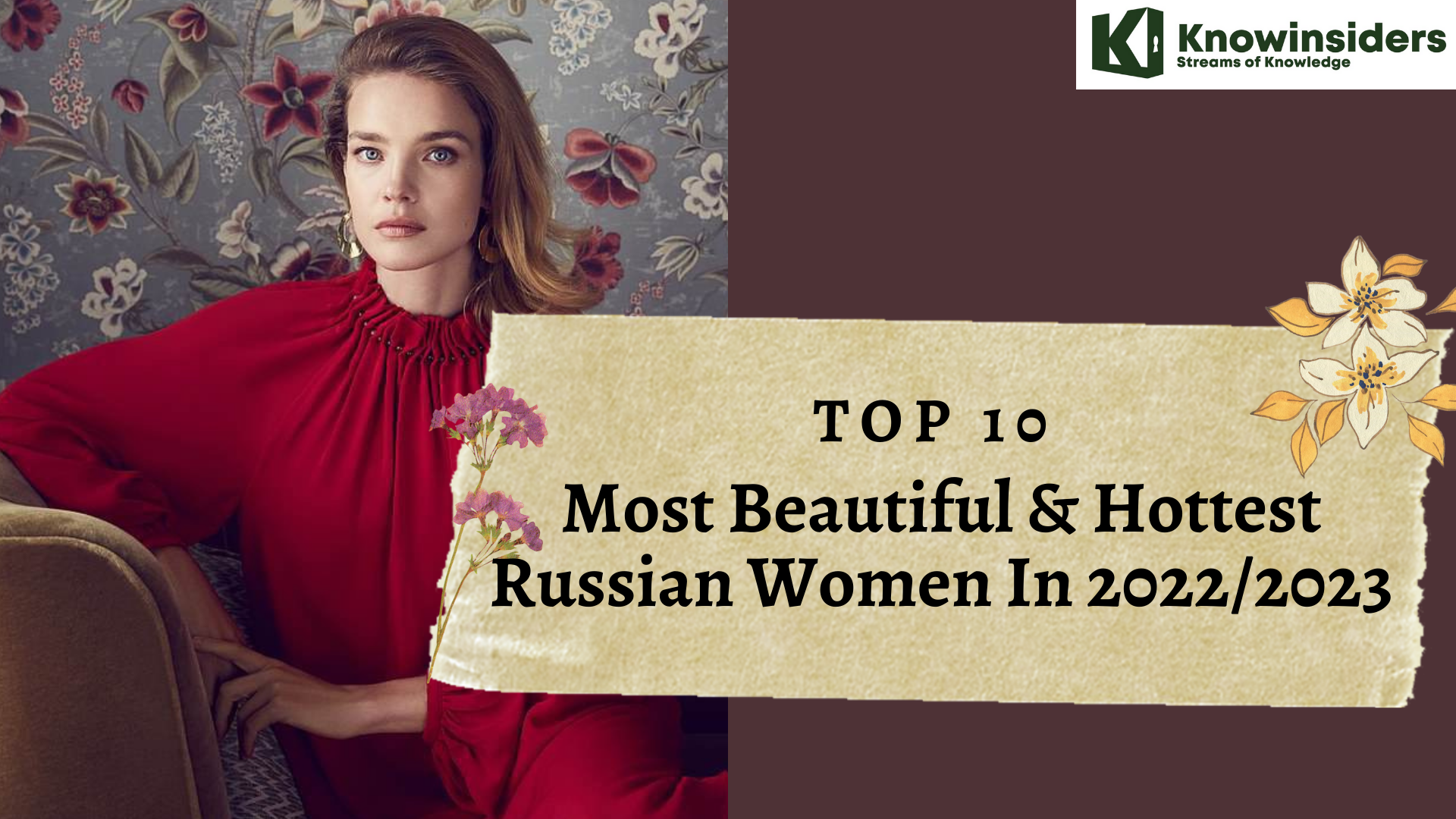 Top 10 Most Beautiful Russian Women in 2023/2024 Top 10 Most Beautiful Russian Women in 2023/2024 |
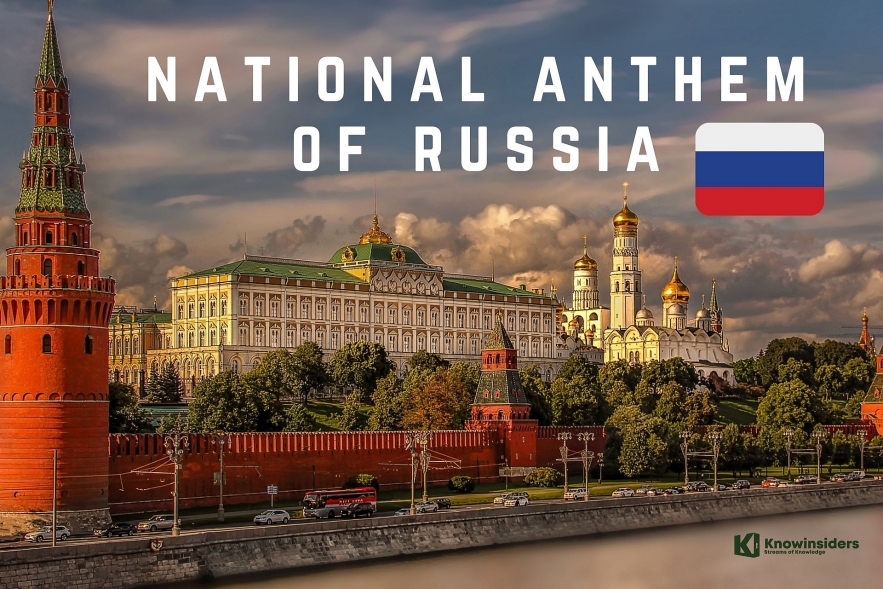 |
| Russian national anthem - Photo: KnowInsiders.com |
Russia has a long and illustrious history, and so does its national hymn. Russia's national anthem, formally titled the "State Anthem of the Russian Federation," reflects the country's rich and varied past, culture, and international standing.
What is The Russian National Anthem?
The "State Anthem of the Russian Federation" is the official title of Russia's national anthem. The music of the song was produced by Alexander Alexandrov in 1939 as the State Anthem of the Soviet Union. The words to the original song of the Soviet Union were written by Gabriel El-Registan and Sergey Mikhalkov. Unfortunately, when this song was accepted by Russia, there were no lyrics employed. This is due to the fact that the old song's lyrics made fun of Joseph Stalin. Mikhalkov wrote new lyrics in 1977 that pulled the focus off of the battle and shed light on communism within the nation.
The melody for the Russian national anthem was formally adopted on December 25, 2000. The lyrics were adopted just five days afterwards. This national anthem has been the subject of some debate. According to a poll conducted in 2009, only approximately 56% of Russians indicate that they feel proud upon hearing the song, and only about 25% truly like the music. Many Russians are not supportive of this anthem because they disagree with a reworked version of the Soviet Union’s hymn being used as their national music.
What is the history of the Russian national anthem?
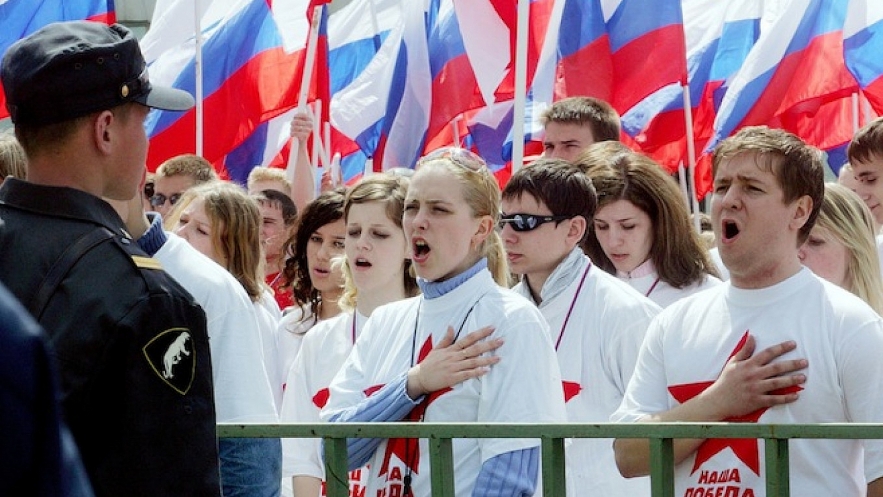 |
| Photo The Moscow Times |
After a period of turbulence and dispute about what Russia's anthem should be, the Putin leadership settled on the music and lyric combination heard today in the year 2000. Since 1990, before the current pairing of Alexandrov and Mikhalkov, a lyricless work by Mikhail Glinka called "Patrioticheskaya Pesnya" was utilized.
Even before that, in 1939, the "Hymn of the Bolshevik Party," which featured Alexandrov's then-current music, was performed for the first time. Shortly before adopting "Gimn Sovetskogo Soyuza" (Hymn of the Soviet Union) as its national anthem in 1944, the USSR played "L'Internationale," a communist hymn written in the late 19th century by two French laborers.
Imperial Russia in the 19th century had previously chosen "The Prayer of the Russians" as its national song.
The old land, which runs from the Arctic in the north to the Caucasus in the south, is celebrated now in song without any Communist connotations, revealing a newfound sense of pride and solidarity.
Russia has had a total of seven different national anthemsThe first officially declared national anthem was introduced in 1816 by Tsar Alexander I, entitled ‘The Prayer of the Russians’ (Молитва русских). In 1833, it was replaced by ‘God Save the Tsar!’ (Боже, царя храни!), which was replaced in turn by the ‘Worker’s Marseillaise’ (Рабочая марсельеза) in March 1917. This too was scrapped months later, when the anthem of international revolutionary socialism, ‘The Internationale’, was adopted by the new Bolshevik government. In 1944, yet another anthem was brought in, the ‘State Anthem of the Soviet Union’, which lasted until the collapse of the Soviet Union in 1991. It was then replaced by ‘The Patriotic Song’ (Патриотическая песня), composed by the 19th century composer Mikhail Glinka; however, soon after becoming president in 2000, Vladimir Putin again changed the national anthem to the State Anthem of the Soviet Union, with new lyrics. Some of the national anthems were partly from abroadVasilii Zhukovskii composed the lyrics to "The Prayer of the Russians," but the song is sung to the melody of "God Save the King," the British national anthem. In 1917, the "Worker's Marseillaise" became the official anthem of the Soviet Union. Originally composed in French, Pyotr Lavrov gave it a more Russian flavor by altering the meter and adding instrumental accompaniment. After Stalin's death in 1953, the Soviet leadership began to criticize him and public opinion of him began to decline, prompting the removal of the laudatory verses from the State Anthem. Those old lyrics weren't updated, and the State Anthem was sung without words from 1955 until 1977. The same held true for "The Patriotic Song," a wordless piano piece. sound harmony. |
Original Lyrics of the Russian National Anthem
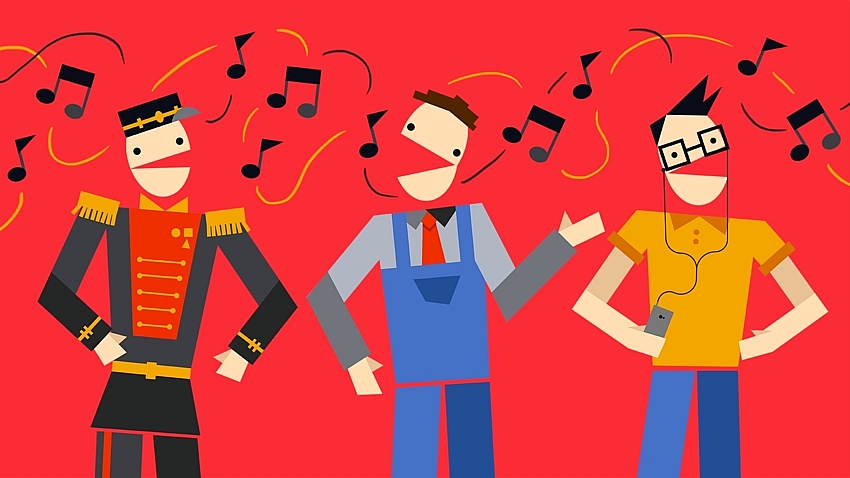 |
| Photo Russia Beyond |
Rossiya – svyashchennaya nasha derzhava.
Rossiya – lyubimaya nasha strana.
Moguchaya volya, velikaya slava –
Tvoio dostoyanye na vse vremena!
Slav'sya, Otechestvo nashe svobodnoye
Bratsikh narodov soyuz vekovoi
Predkami dannaya mudrost' narodnaya!
Slav'sya, strana! My gordimsya toboi!
Ot yuzhnyh morei do polyarnogo kraya
Raskinulis' nashi lesa i polya.
Odna ty na svete! Odna ty takaya –
Khranimaya Bogom rodnaya zemlya!
Slav'sya, Otechestvo nashe svobodnoye
Bratsikh narodov soyuz vekovoi
Predkami dannaya mudrost' narodnaya!
Slav'sya, strana! My gordimsya toboi!
Shirokii prostor dlya mechty i dlya zhizni.
Gryadushchiye nam otkryvayut goda.
Nam silu daiot nasha vernost' Otchizne.
Tak bylo, tak yest' i tak budet vsegda!
Slav'sya, Otechestvo nashe svobodnoye
Bratsikh narodov soyuz vekovoi
Predkami dannaya mudrost' narodnaya!
Slav'sya, strana! My gordimsya toboi!
English Lyrics of the Russian National Anthem
Russia is our sacred state,
Russia is our beloved country.
A mighty will, great glory -
Your dignity for all time!
Be glorified, our free Fatherland,
The age-old union of fraternal peoples,
Ancestor-given wisdom of the people!
Be glorified, country! We are proud of you!
From the southern seas to the polar edge
Our forests and fields are spread out.
You are the only one in the world! You are the only one -
the native land so kept by God!
Be glorified, our free Fatherland,
The age-old union of fraternal peoples,
Ancestor-given wisdom of the people!
Be glorified, country! We are proud of you!
A wide scope for dreams and for life
The coming years open to us.
We are given strength by our fidelity to the Fatherland.
So it was, so it is and it will always be so!
Be glorified, our free Fatherland,
The age-old union of fraternal peoples,
Ancestor-given wisdom of the people!
Be glorified, country! We are proud of you!
| The law stipulates that the State Anthem of the Russian Federation must be performed only with the original music and the original lyrics. When the anthem is played in an official context, men must remove any headwear and everybody has to stand up, facing towards the Russian flag if one is present. |
Why is the Russian National Anthem not being played at the Olympics and Paralympics?
The Russian national anthem cannot be played at the 2021 Tokyo Olympics and Paralympics or the 2022 Beijing Winter Olympics and Paralympics as a result of sanctions imposed on the Russian Olympic Committee. When a Russian athlete wins a gold medal, though, we instead hear the sounds of classical music. But what kind of music is that, exactly?
That was the first movement of Tchaikovsky's Piano Concerto. Tchaikovsky, one of Russia's most well-known composers, originally created it at the end of 1874; however, he made significant changes to it after receiving criticism from the piece's initial dedicatee, Nikolai Rubinstein. Tchaikovsky wrote a total of three piano concertos, this being the first.
The World Anti-Doping Agency has issued a "ban" on Russia participating in the 2021 Olympics and Paralympics. First announcement of the decision was made in 2019, and it included a two-year ban from participating in the Olympics or any other major international athletic competition.
Therefore, the Russian Olympic Committee was formed, and from now on Russian competitors compete under its name. If a country is blacklisted from the Olympics or Paralympics, their national anthem is not permitted to be played at any events. Because of this, Russia opted for some fresh musical composition to celebrate its victorious athletes.
As the country will be barred from hosting any international sporting events between 2019 and 2022, you may be listening to Tchaikovsky's First Piano Concerto more often than you expected.
But where might you recognise that tune from?Classical music fans like Tchaikovsky's Piano Concerto, but pop culture junkies may remember it best as the introduction to the PBS series Hooked on Classics. In 1981, the Royal Philharmonic Orchestra released an album called Hooked on Classics, which fused classical music excerpts with disco sounds. |
Russian people had the opportunity to suggest their own lyrics for the national anthemTo replace "The Internationale," Stalin launched his search for a new national anthem in 1943, holding a contest in which more than 200 composers submitted their works. Dmitrii Shostakovich and Aram Khachaturian, two renowned Soviet composers, collaborated on a piece for the competition but ultimately failed to win. After President Boris Yeltsin renamed the national anthem "The Patriotic Anthem" in the 1990s, a contest was held where any average Russian may submit their own lyrics to be set to the tune. Yeltsin, however, did not choose any of the candidates. |
National Symbols Of Russia
The Double-Headed Eagle
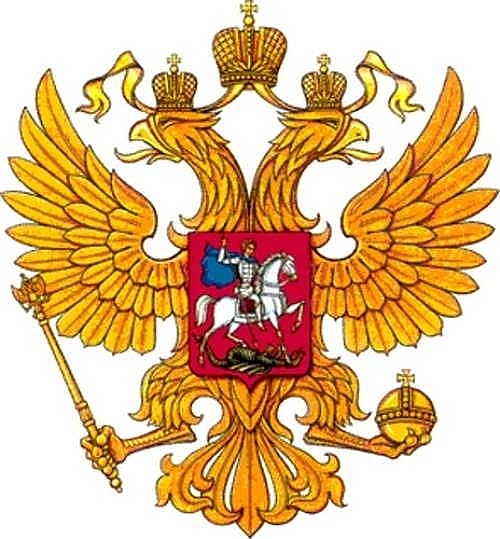 |
| Photo Pinterest |
The sceptre represents the authority of the state, while the globe represents harmony and cooperation. The Eagle of St. George features prominently on its chest. It has been worn by Russians as a symbol of their devotion to the Motherland for centuries. On the reverse of contemporary Russian coins, the eagle can also be seen. Russia's national symbol is a bald eagle with two heads. There are three crowns placed atop their heads. The three crowns represent the legislative, judicial, and executive branches as equal and hence the symbol of state sovereignty.
National Flag
The Russian flag has white at the top, blue in the middle, and red at the bottom. Scarlet indicates selflessness, generosity, and love while white represents nobility and candor. Blue represents loyalty, honesty, and chastity. Some Russians associate the color red with earth, others with water, and still others with the heavens.
The present flag of Russia was chosen on August 21, 1991, only days before the country declared its independence. According to the vast majority of academics, Peter the Great was the creative force behind Russia's flag. Out of all the flags available in 1699, Peter chose the white, blue, and red Dutch flag. His creation first flew from Russian trade ships and subsequently was officially accepted as the national flag in 1883.
Non-official symbol: Matryoshka
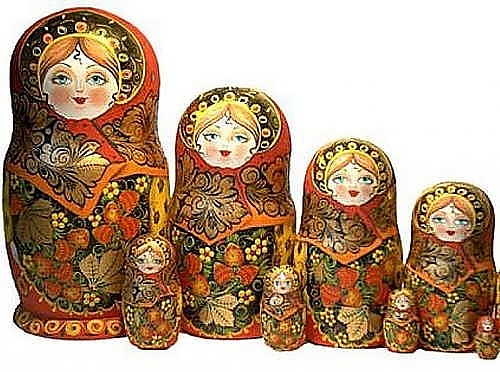 |
| Photo Pinterest |
The matryoshka is both a widely recognized icon of Russia and an often purchased memento of a visit to Russia. That would be a nesting set of wooden dolls. Often depicted on them is a woman in a floral or patterned Russian national dress. The matryoshka seems like it came straight out of the ancient world of myths and legends, but in fact the wooden doll has only been around for the past hundred years or so.
In the 1880s, as a growing feeling of cultural and national identity was taking hold in Russia, the first matryoshka was created. Savva Mamontov, an industrialist and art patron, founded a Children's Education workshop, where Russian folk craftsmen made a range of toys in the manner of Russian folk art, and where the concept of a new Russian style was born. Someone once brought a Japanese bald-headed elderly man figurine called Fukuruma, which was actually seven individual figurines snuggled together. It was created by a Russian monk in the late 1800s on the Japanese island of Honshu.
Matryoshka, a new type of Russian folk art doll, was conceived after the arrival of the Russian-Japanese "Fukuruma" and created by master craftsman V. Zvezdochkin and artist S.Maliutin. Matryoshka was introduced to the world in April of 1900 at the World's Fair in Paris, where it earned a bronze medal and became famous all over the globe.
It is from the Russian word for "mother," "мaт» (the Latin root "mater "- mother), that the name "matryoshka" is derived. The belief that the largest doll carries her babies inside like an expectant mother and that each daughter in turn becomes a mother led to the term "small mother" being used to the matryoshka doll. Therefore, the matryoshka is a symbol of maternal love because of its modified egg shape.
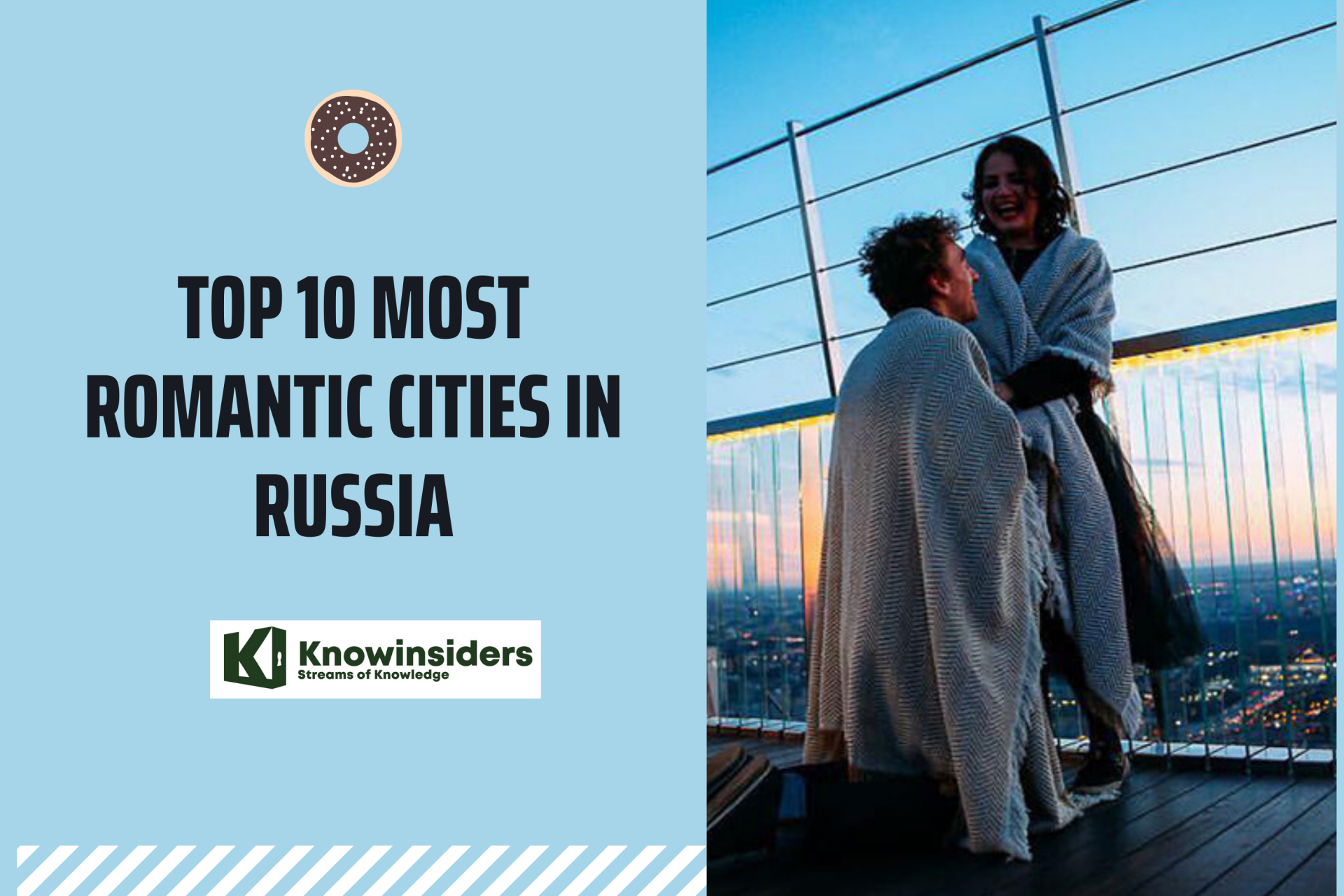 Top 10 Most Romantic Cities in Russia Top 10 Most Romantic Cities in Russia Russia is home to some of the wildest and most wondrous natural landscapes on the planet, but which are the most romantic and beautiful cities ... |
 Top 10 Most Beautiful Places To Visit In Russia Top 10 Most Beautiful Places To Visit In Russia Thinking about visiting Russia? The list of top 10 most beautiful places in Russia will be a suggestion for you. |
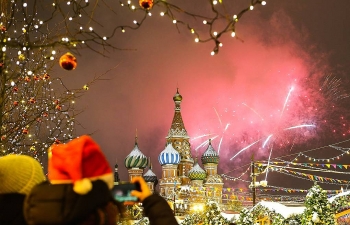 TOP 15 Most Popular Holidays in Russia TOP 15 Most Popular Holidays in Russia Russia has one of the highest numbers of official holidays in the world. In this article, KnowInsider reviews the holidays and main celebrations (festivals) that ... |
























